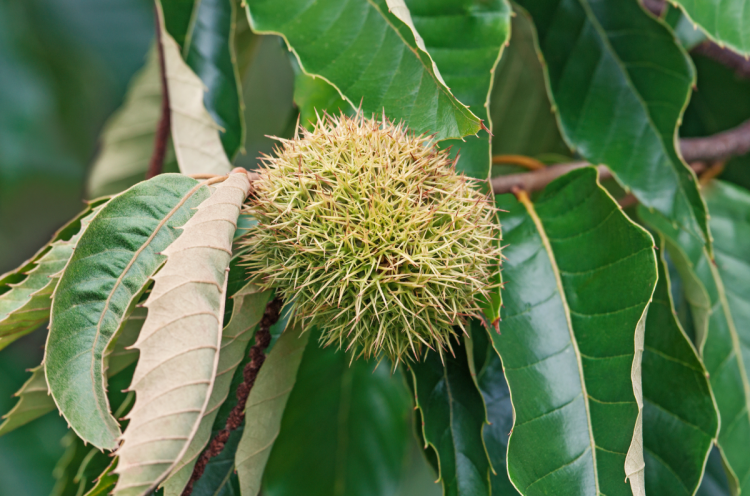Genetic Diversity May Hold the Key to Bringing Back an Iconic Endangered Tree
By Barbara Hyde-Lay
23 February 2023

One hundred years ago, an introduced fungus nearly wiped out an iconic tree species in Canada and the United States: the American chestnut. Only a fraction of the tree’s original population remains today, but researchers in the Department of Integrative Biology say they have retained a surprising amount of genetic diversity —and that could offer the species a path to recovery.
Dr. Brian Husband and PhD candidate Sophia Stoltz recently published their findings in the Journal of Conservation Genetics.
The American chestnut once dominated the eastern deciduous forests, including those in southern Ontario. These majestic, much-loved trees could reach 100 feet in height and produced large chestnut crops annually, making them an important species for wildlife, as well as an important source of lumber.
But in the early 1900s, the introduction of the fungus Cryphonectria parasitica caused a dramatic decline in the overall population, and over 100 years later, it has still not recovered.
“There aren’t any grand, big old trees like there were a century ago,” says Husband. “The fungus has spread like wildfire and basically decimated the entire chestnut population. I’ve seen photographs of completely barren forests which were once filled with large chestnut trees, and now they are just levelled.”
How does a tiny fungus take down such a large opponent? In part by stealth; the fungus creeps into the wounds on the tree and proceeds to block its vascular system, which is needed to transport water and nutrients from the roots to the rest of the tree.
“The fungus basically cuts off vascular access to the rest of the tree above where the fungus is, essentially strangling it,” explains Stoltz.
The widespread destruction caused by the fungus was assumed to have caused an important loss of genetic diversity in the species. Few trees are left to reproduce, and those that do are soon infected with the fungus, preventing them from growing large enough to reproduce sexually —a key factor in maintaining a diverse gene pool.
Husband and Stoltz set out to see just how much genetic variation was left in American chestnut populations, from southern Ontario and extending down Virginia.
“Some projects on chestnut diversity have been done in the US, but none have reached across the border to include significant sampling of the Canadian population,” explains Stoltz. “We wanted to focus on the genetic diversity in both populations, to get a better picture of what is happening across the geographical range for this species.”
After surveying and analyzing samples from 13 different populations of American chestnut from Canada and the United States, the genetic diversity data was in —with some unexpected results.
First, even though the Canadian populations of trees remain true American chestnuts, there were marked genetic differences between Canadian specimens and their counterparts south of the border.
Second —and more surprising yet to the researchers— there was much more genetic diversity among the species as a whole than expected. Prior to Husband and Stoltz’s study, it was largely assumed that surviving chestnuts were suffering a genetic bottleneck, potentially limiting their capacity to evolve resistance to fungus.
That doesn’t appear to be the case, which is good news for conserving the species.
“The survival of the species may depend on having enough genetic diversity… it’s what gives them the ability to adapt and evolve over time,” says Stoltz.
Moving forward, the Husband lab is keen to determine how this unexpected level of genetic variability is affecting the tree’s resistance —or lack thereof— to the fungus.
“One of my next projects is to sample some susceptible trees and some seemingly tolerant, healthier trees in Ontario,” says Stoltz. “Then we will sequence their genomes and compare the two.”
The goal is to determine whether healthier looking trees have some residual tolerance to fungal infection and to identify what regions in the genome are linked to this tolerance, which may aid in future restoration programs!
Stoltz’s interest in chestnut trees has been growing strong since she first completed a research project in the Husband lab as an undergraduate. She was especially drawn to the conservation and restoration implications of chestnut research, which eventually led her to pursue her PhD on the topic.
And yes, the American chestnut has become her favorite tree!
This study was funded by the natural Sciences and Engineering Research Council (NSERC).
Read the full study in the journal Conservation Genetics.
Read about other CBS Research Highlights.